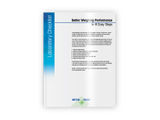To use all functions of this page, please activate cookies in your browser.
my.chemeurope.com
With an accout for my.chemeurope.com you can always see everything at a glance – and you can configure your own website and individual newsletter.
- My watch list
- My saved searches
- My saved topics
- My newsletter
Fiber laserA fiber laser or fibre laser is a laser in which the active gain medium is an optical fiber doped with rare-earth elements such as erbium, ytterbium, neodymium, dysprosium, praseodymium, and thulium. They are related to doped fiber amplifiers, which provide light amplification without lasing. Fiber nonlinearities, such as stimulated Raman scattering or four-wave mixing can also provide gain and thus serve as gain media for a fiber laser. Additional recommended knowledge
ApplicationsApplications of fiber lasers include material processing, telecommunications, spectroscopy, and medicine. The advantage of the fiber laser is that the light is already coupled into the fiber and can be easily delivered to a movable focusing element. Such a coupling is important for laser cutting or laser welding or laser folding of metals and polymers. Design and manufacturing of fiber lasers
Unlike most other types of lasers, the laser cavity in fiber laser is constructed monolithically by fusion splicing the different types of fibers; most notably fiber Bragg gratings replace here conventional dielectric mirrors to provide optical feedback. To pump fiber lasers, semiconductor laser diodes or other fiber lasers are used almost exclusively. Fiber lasers can have active regions several kilometers long, and can provide very high optical gain. They can support kilowatt levels of continuous output power because the fiber's high surface area to volume ratio allows efficient cooling. The fiber waveguiding properties reduce or remove completely thermal distortion of the optical path thus resulting in typically diffraction-limited high-quality optical beam. Fiber lasers also feature compact layout compared to rod or gas lasers of comparable power, as the fiber can be bent to small diameters and coiled. Other advantages include high vibrational stability, extended lifetime and maintenance-free turnkey operation. Double-clad fibers
Many high-power fiber lasers are based on double-clad fiber. The gain medium forms the core of the fiber, which is surrounded by two layers of cladding. The lasing mode propagates in the core, while a multimode pump beam propagates in the inner cladding layer. The outer cladding keeps this pump light confined. This arrangement allows the core to be pumped with a much higher power beam than could otherwise be made to propagate in it, and allows the conversion of pump light with relatively low brightness into a much higher-brightness signal. As a result, fiber lasers and amplifiers are occasionally referred to as "brightness converters." There is important question about shape of the double-clad fiber; fiber with circular symmetry seems to be worst possible design[1][2][3][4][5] [6]. The design should allow core to be small enough to convert the pump to only few (or even one) mode, to provide the cladding large enough to allow the confinement of pump and to allow most of pump to be used in the core in relatively short piece of the fiber. Fiber disk lasers
Another type of fiber laser is the fiber disk laser. In such a laser, the pump is not confined in the cladding of the fiber (as in the double-clad fiber), bit goes across the roped core many times, as it is coiled. This configuration is suitable for the power scaling, while anyway many sources of pump are used, and there is no reason to make all the pump propagate along all the length of the fiber [7][8][9][10] See also
References
|
|
| This article is licensed under the GNU Free Documentation License. It uses material from the Wikipedia article "Fiber_laser". A list of authors is available in Wikipedia. |







